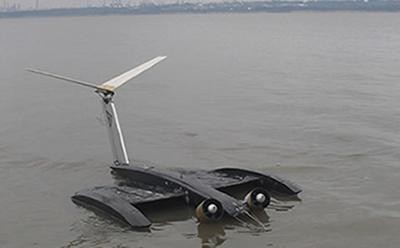By Ana Verayo, | February 19, 2016

Bat flight inspired design for Micro Air Vehicle
A new bat-like plane in the form of an unmanned Micro Air Vehicle (MAV) can now glide over water and splash down to take off and change its wings shape depending on the forces of nature it encounters.
This new drone technology is developed by scientists of the Southampton University and the Imperial College London where they tested this new MAV using better and more efficient aerodynamic properties, that can fly longer distances and even become more cheaper to operate.
Like Us on Facebook
This new wing design consists of built in electroactive polymers that can make the wings stiff and relaxed depending on the voltage applied for improved performance. This is similar to how a bat can flex and change its wing shape during flight.
This is also a prime example of biometrics where this new technology utilizes a wide range of materials and technology that are all inspired by nature.
Drones that possess flapping wings that are called ornithopters are also believed to have a better advantage over current aircraft designs as more and more drone projects now mimic how birds fly and ride thermals to gain more height. Other drones also have the ability to perch on branches or wires inspired by hawk talons.
According to Rafael Palacios from the Imperial College's department of aeronautics, there are some challenges for these types of drones, as they could be mistaken for a bird by other birds where Raven drones built by the U.S. military reportedly collide into other hawks out of the sky.
Palacios explains how bat wings can help build better drones from flapping motions to create propulsions for birds, to membrane structures that can naturally change their shape in the wind and by using an integrated skeleton that can be designed with more precise detail.
For this bat wing design for the drone, scientists first created a mathematical model and built software simulation for this to integrate aerodynamic flows to the wing around it and the effect of the electric field generated across them, not just modeling them after actual bat wings.
According to Bharath Ganapathisubramani from the aerodynamics and flight mechanics department of the University of Southampton, they tested a prototype measuring half a meter, inside a wind tunnel and then over a body of water, where the new bat wing designs have been successful enough to be launched within five years.
Ganapathisubramani also says that these active wings also underwent laboratory trials that changed its overall performance by combining computational and experimental approaches to build a successful, bio-inspired MAV design.
-
Use of Coronavirus Pandemic Drones Raises Privacy Concerns: Drones Spread Fear, Local Officials Say

-
Coronavirus Hampers The Delivery Of Lockheed Martin F-35 Stealth Fighters For 2020

-
Instagram Speeds Up Plans to Add Account Memorialization Feature Due to COVID-19 Deaths

-
NASA: Perseverance Plans to Bring 'Mars Rock' to Earth in 2031

-
600 Dead And 3,000 In The Hospital as Iranians Believed Drinking High-Concentrations of Alcohol Can Cure The Coronavirus

-
600 Dead And 3,000 In The Hospital as Iranians Believed Drinking High-Concentrations of Alcohol Can Cure The Coronavirus

-
COVID-19: Doctors, Nurses Use Virtual Reality to Learn New Skills in Treating Coronavirus Patients







